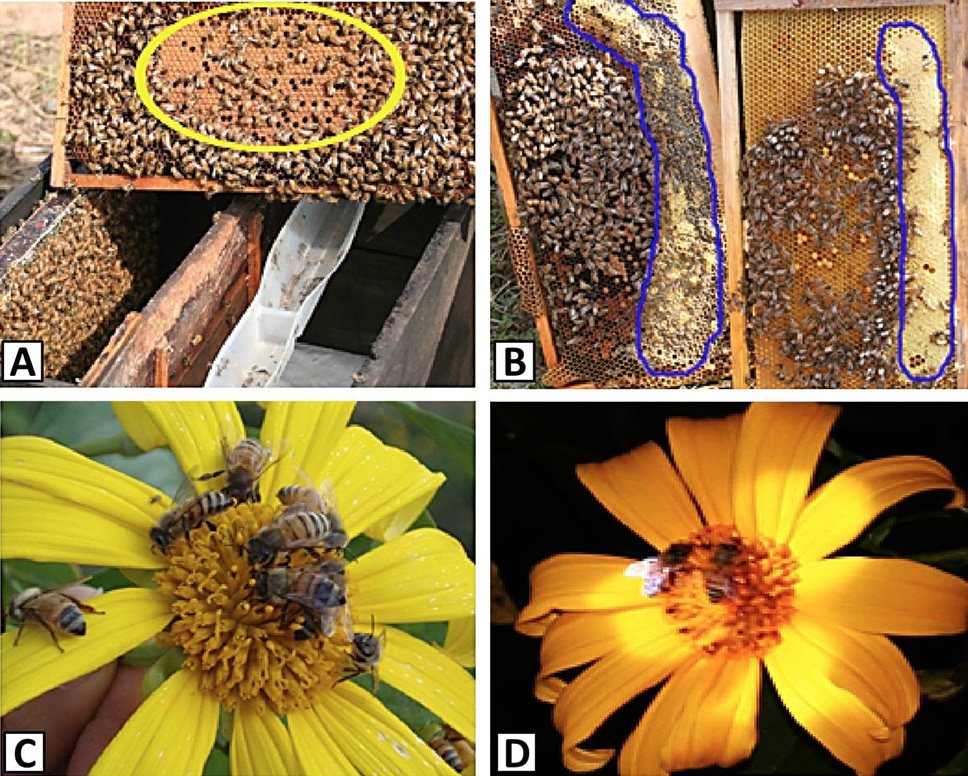Synergistic and Dichotomous Effects of Nectar Phenolics on Honey Bee Colonies
Synergistic and Dichotomous Effects of Nectar Phenolics on Honey Bee Colonies
Xueli Jiang1,2, Jie Gao3, Muhammad Zahid Sharif1,2, Xuewen Zhang4 and Fanglin Liu1,*
Rapid decline of Apis mellifera colonies during the flowering period of Tithonia diversifolia. A, A small cluster of nurse bees were living with queen and brood (yellow ellipse); B, Much honey (blue circle) was stored in the hive; C, Bees aggregated in a flower for more than six hours; D, Bees stayed in a flower at night.
Partial plots for the four most influential phenolics based on the outcomes of the Random Forests analysis. Abbreviations are defined in Table I.
Effect of nectar phenolics on orientation of young adult bees. A, Of 500 young bees (≤ 10-day old) that fostered in P-fed colonies, a total of 304 bees lost from host colonies; B, The drifted bees were found in other hives. Each point represents mean ± standard error. S- or P-fed denotes the colonies fed 25% sucrose syrup and those fed the same syrup with the mixture of IA, PA, CA and G, respectively.













